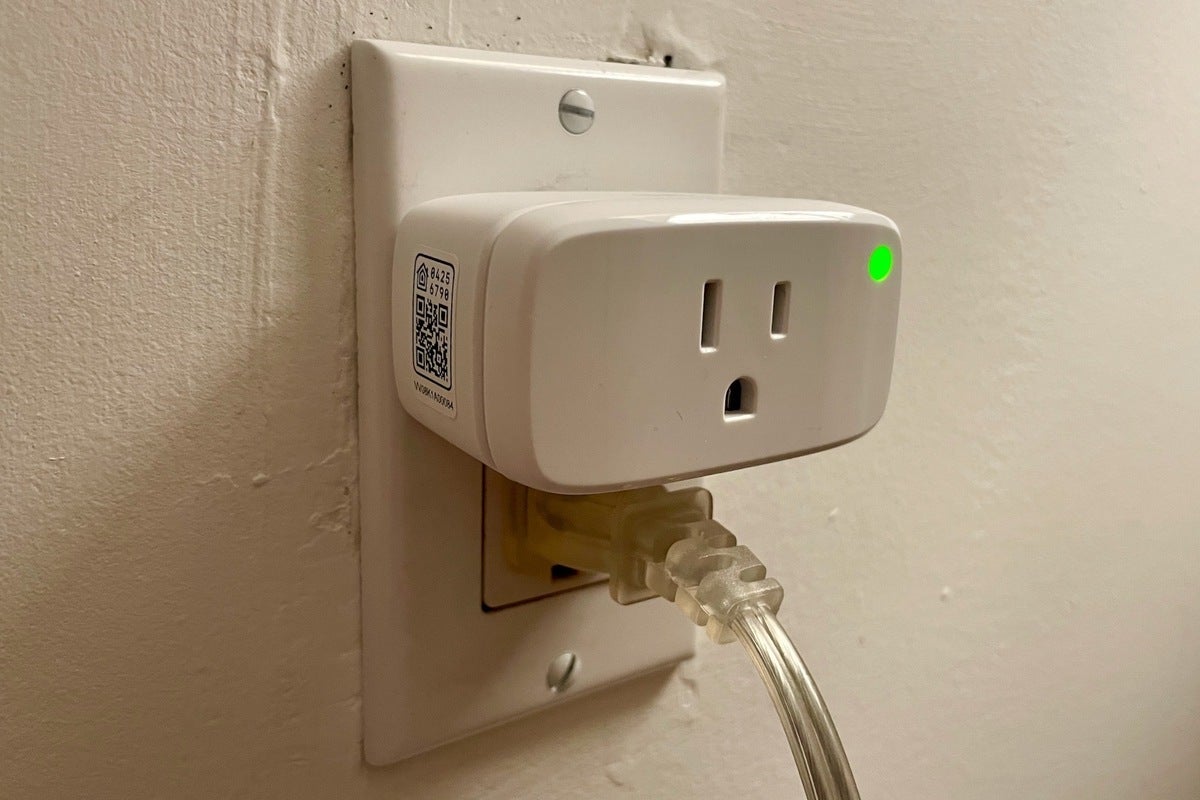
Eve Energy review: This HomeKit smart plug doubles as a Thread router
A compact, HomeKit-compatible smart plug with plenty of automation options along with robust energy-monitoring features, Eve Energy might be pricier than its competitors, but it comes with an ace up its sleeve: support for Thread, an exciting wireless protocol that will—eventually—work hand-in-hand with Matter, the new smart home platform that promises to finally teach Alexa, Google Assistant, and Apple HomeKit to play nice with each other.
Eve Energy checks most of the most important boxes when it comes with energy-monitoring smart plugs, but because it only works with HomeKit (for now, anyway), Android users will need to look elsewhere. The same is true for anyone who depends on Alexa or Google Assistant for smart home control.
This review is part of TechHive’s coverage of the best smart plugs, where you’ll find reviews of the competition’s offerings, plus a buyer’s guide to the features you should consider when shopping for this type of product.
Specifications
Measuring roughly 2.5 x 1.5 x 1.3 inches (WxDxH, not including the prongs), the grounded Eve Energy plug is relatively compact compared to its competitors; while it is a tad wide, the plug is short enough to leave the second socket of a two-outlet plate free. A button in the top right-hand corner of the Eve Energy’s face lets you toggle the plug’s power manually, and the button lights up green when the plug is energized.
Eve Energy is rated to deliver 15 amps and 1,800 watts, which makes it suitable for lights, fans, humidifiers, and similar small appliances. It might also work with an air conditioner, but be sure to check that device’s power requirements first; if the A/C unit has a power draw greater than 15 amps, don’t try it (and besides, you might be better off with a smart air conditioner controller).
Connectivity and smart home integration
Unlike the Eve Energy Strip, the HomeKit-enabled Eve Energy doesn’t connect to Wi-Fi networks. Instead, it works with Bluetooth or Thread, a low-power, low-latency wireless protocol for smart home devices that’s been gaining momentum in recent months following a slow start.
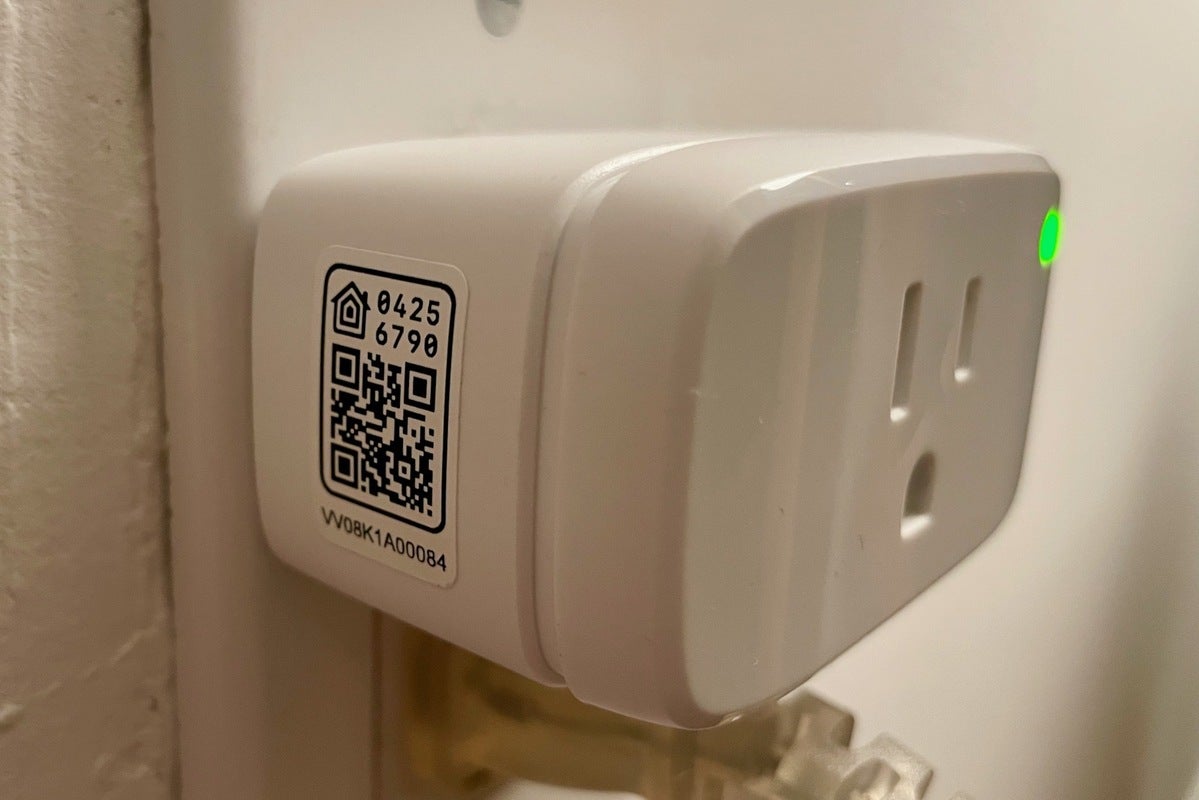 Ben Patterson/IDG
Ben Patterson/IDGYou can quickly add Eve Energy to the Eve app by scanning its HomeKit QR code.
Eve Energy is also a Thread router, which means that it can extend a Thread network by connecting nearby Thread devices (including other Thread routers, such as Nanoleaf’s Essentials lights, and Thread endpoints, including Eve Door & Window) to each other. You can’t control an Eve Energy smart plug from outside the home, however, unless you also have a Thread border router. Here’s how the three classes of Thread device differ:
Thread endpoints can send and receive, but they can’t relay data packets. Routers can relay data packets, but they can’t connect to the internet. Border routers can relay data packets and reach the internet by forming a bridge to your home network’s primary router. For now, there are only two HomeKit “home hub” devices that act as Thread border routers: the second-gen (or later) Apple TV 4K and the HomePod mini.
Thread has the potential to be one of the more exciting smart home developments we’ve seen in recent years, particularly since it’s a pillar of Matter, a new smart home standard that promises to—eventually—unite the Alexa, Google Assistant, and Apple HomeKit ecosystems.
Enticing stuff, no doubt, but Matter won’t truly materialize until the end of 2021, when the first Matter-enabled devices are expected to ship. So until Eve Energy starts working with Matter, the plug will only support HomeKit, not Alexa or Google Assistant.
If you’d rather skip Thread connectivity (which might be temping if you’d rather not lay down $179 for an Apple TV 4K or $99 for a HomePod mini), you could always just stick with Bluetooth control. However, you’ll still need a HomeKit home hub device—meaning an Apple TV, an iPad, or a HomePod mini—for out-of-home control.
Setup
I decided to use Eve Energy to control a small Vornado fan in our basement, where there happen to be a variety of other Thread-enabled devices, including a HomePod mini (which, as I previously mentioned, is a Thread border router), and a pair of Nanoleaf Essentials lights, which are both Thread routers (but not border routers). Upstairs, I’m testing an Eve door sensor that’s a Thread endpoint.
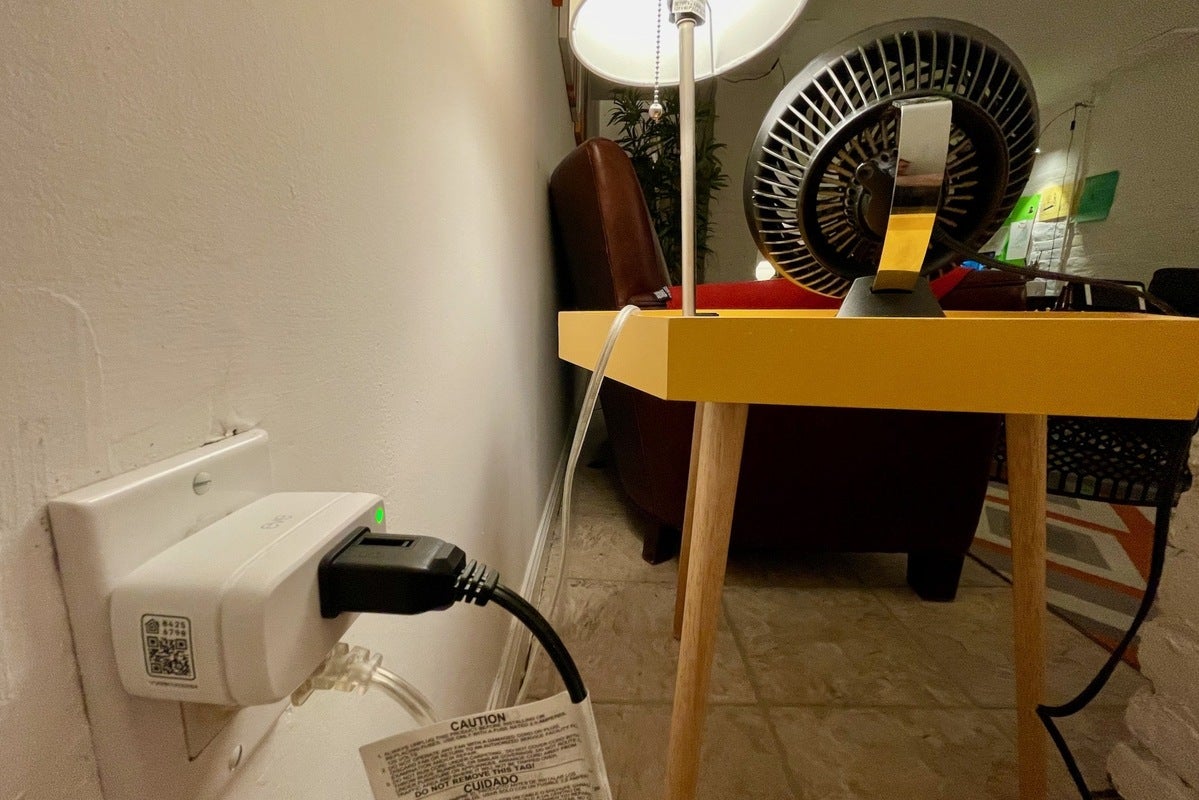 Ben Patterson/IDG
Ben Patterson/IDGBesides turning my dumb Vornado fan into a smart one, Eve Energy also acts as a Thread router, which means it can connect other nearby Thread devices together.
The actual setup was simple and painless. I plugged Eve Energy into a power socket, plugged my Vornado fan into the Eve Energy, and then used the Eve app to add the plug, which you can do by scanning the embedded QR code. As with other Eve smart products, you don’t need to create an Eve account or otherwise register your email address, which is a refreshing change of pace.
Once you’ve added Eve Energy to the Eve app, you can add it to a room in your home (“Downstairs,” in my case). That action is automatically reflected in the Apple Home app, and by the same token, all your HomeKit-compatible smart devices will appear in the Eve app as well as in Home.
Features and functionality
One of the niftiest features of Eve Energy is the ability to set schedules that sit on the device itself, meaning that the plug can follow schedules independently of an iPhone, a home hub, or even an internet connection.
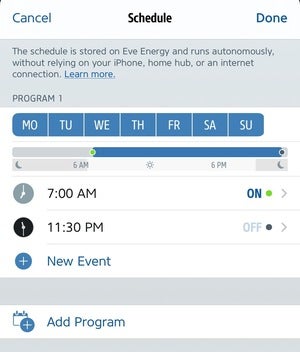 Ben Patterson/IDG
Ben Patterson/IDGSchedules that you create on the Eve app are stored locally on the Eve Energy, freeing it from the need of an internet connection.
You can create both daily and weekly schedules triggered either by set times or by sunrise or sunset, and you can create multiple “programs” with different repeating schedules. You can also control Eve Energy using an automation in the HomeKit app, although that will require an active home hub connection.
You can also add rules that turn the plug on or off according to a variety of triggers. For example, you could set the plug to turn on when a door sensor gets tripped, when a light gets turned on, when a weather station detects temperatures above a certain level, or when you arrive home. Another option would be to add the plug to a scene (which might include, say, turning certain lights on or off), which in turn could be triggered by a condition (such as a time, an event, or a voice command, like “Hey Siri, I’m home.”)
Unlike Apple’s opaque Home app, the Eve app shows you what’s going on under the hood of your Thread network. Not only will it report that the Eve Energy is a Thread device that functions as a router, it will also show you the other Thread-enabled products in your household, as well as their current status. For example, I was able to see that my Eve door sensor, which is a Thread endpoint, was connected to one of my Thread-equipped Nanoleaf smart bulbs (the Eve Energy was too far away to help with the door sensor), while my Nanoleaf Essentials light strip was acting as a “leader” for the other Thread routers in my home. You can also see the quality of the Thread traffic going into and out of your various Thread devices, which could come in handy if you’re troubleshooting spotty Thread conections.
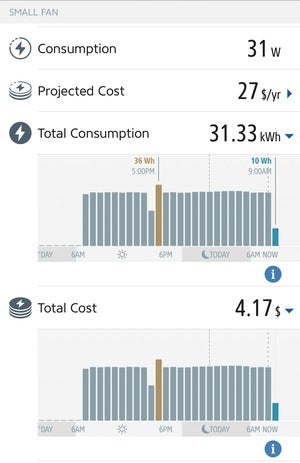 Ben Patterson/IDG
Ben Patterson/IDGThe Eve app displays the current power consumption of any device plugged into Eve Energy, and it can also estimate its annual energy cost as well as power costs over time.
The Eve app does a thorough job of monitoring the Eve Energy’s power consumption. Besides displaying its current amperage and voltage, the Eve app can display the plug’s power use in an hourly, daily, weekly, or monthly bar chart. The app can also break down your estimated power spending over the past days, weeks, and months, based on the average electricity rate in your region; you can also plug in a personalized energy rate from your power bill. Finally, the app projects how much the plug’s energy use may cost you over the course of a year based on your historical usage.
Bottom line
As it stands, the Thread-enabled Eve Energy is one of the most feature-rich smart plugs we’ve tested, and it will be even more enticing once the Thread ecosystem matures and the smart-home- platform-unifying Matter finally arrives on the scene (assuming the plug gets Matter-certified). Until then, however, Eve Energy will only appeal to Apple users, and even then it comes saddled with a lofty price tag.
Stay connected with us on social media platform for instant update click here to join our Twitter, & Facebook
We are now on Telegram. Click here to join our channel (@TechiUpdate) and stay updated with the latest Technology headlines.
For all the latest Technology News Click Here
For the latest news and updates, follow us on Google News.

